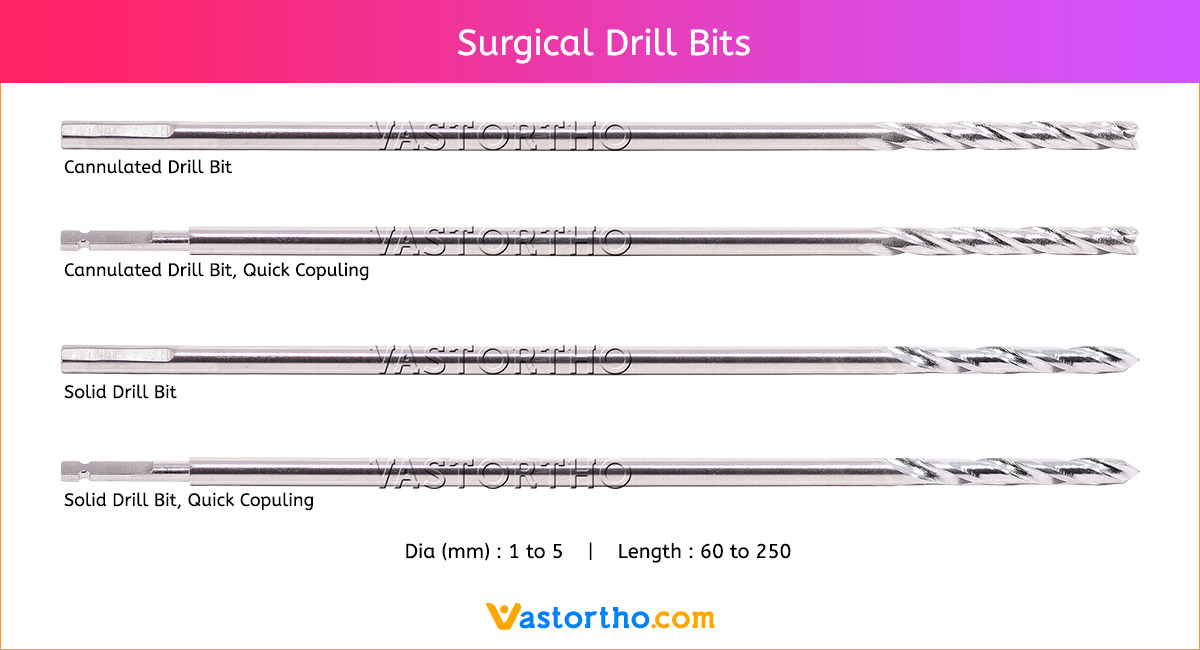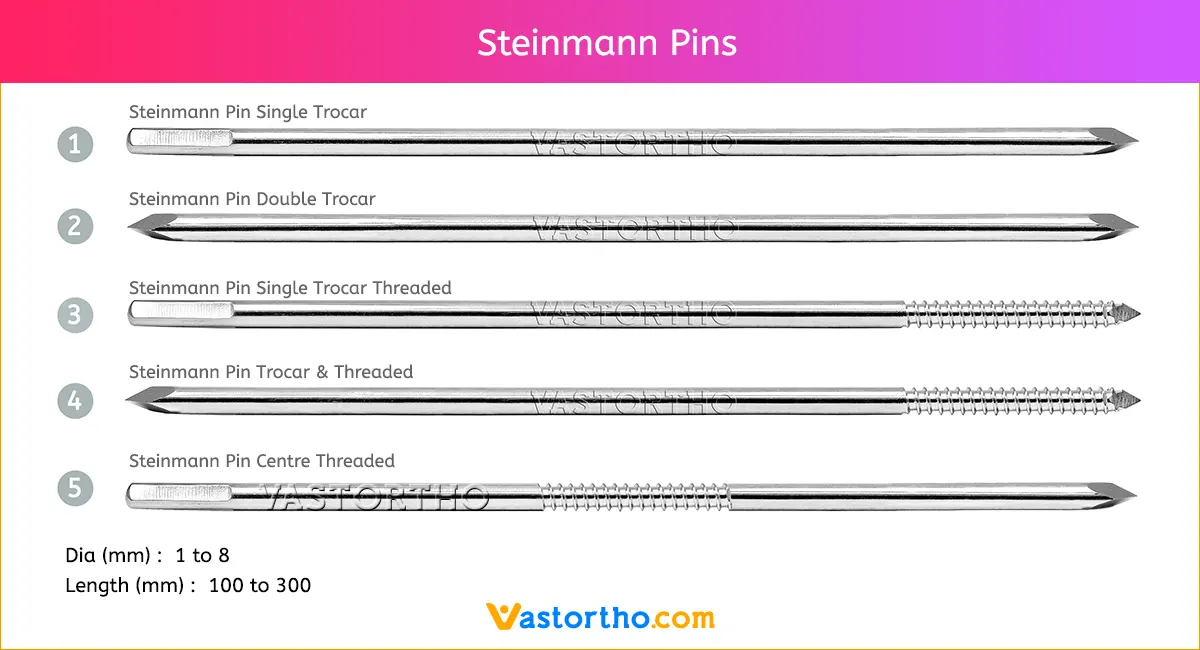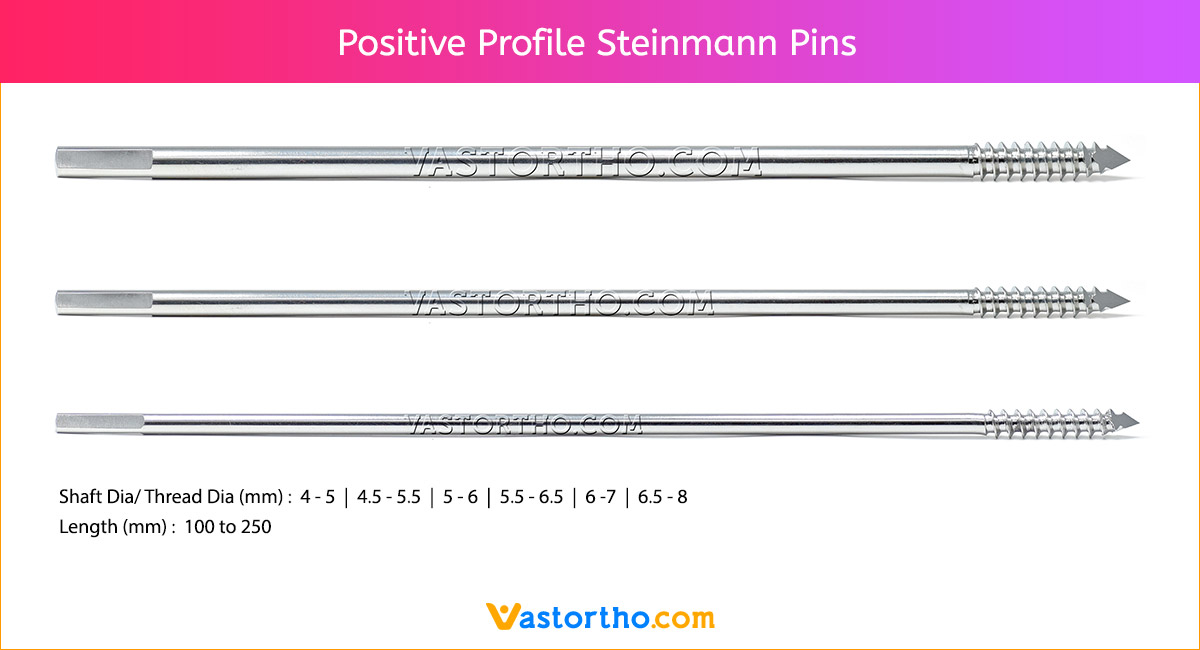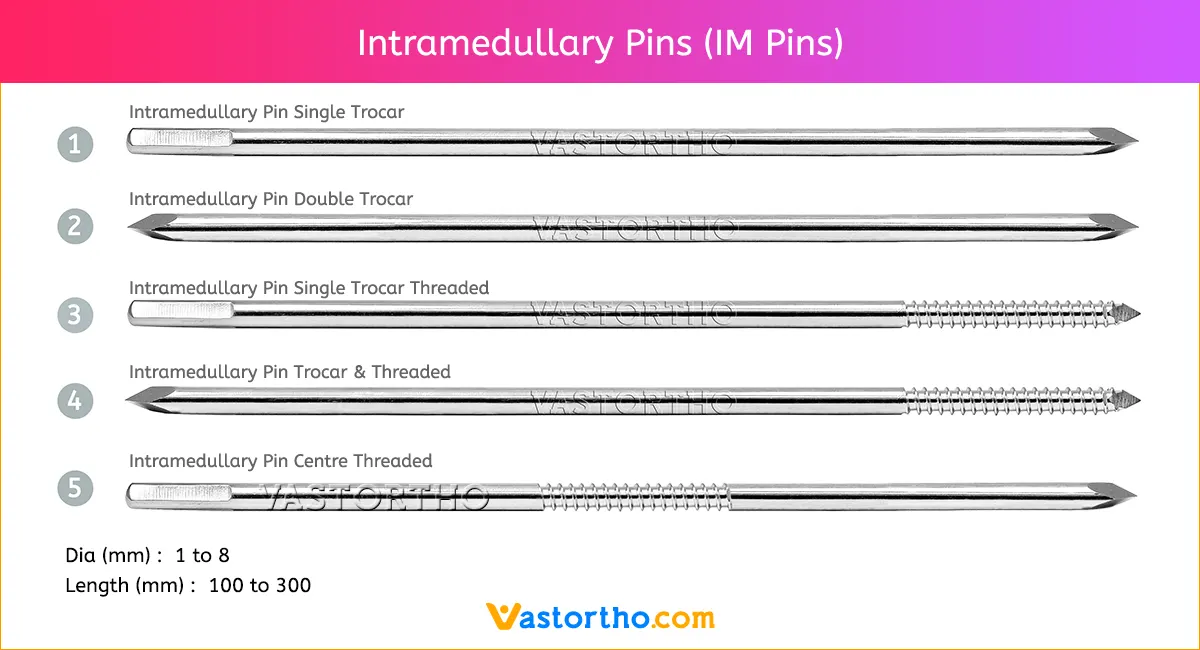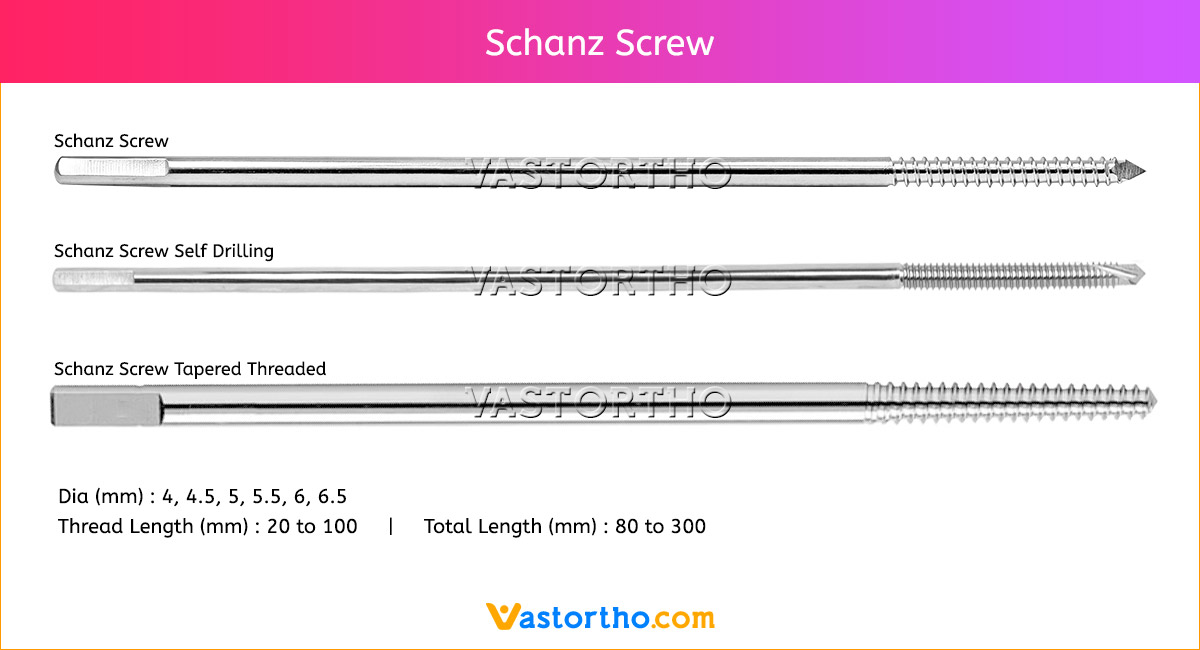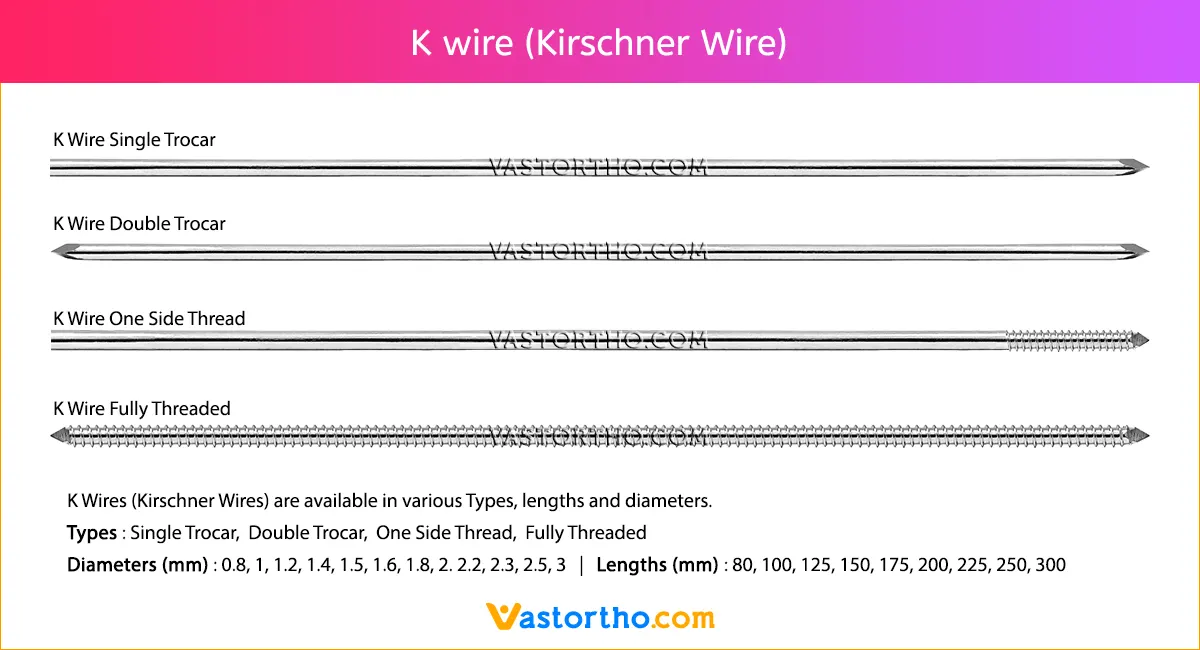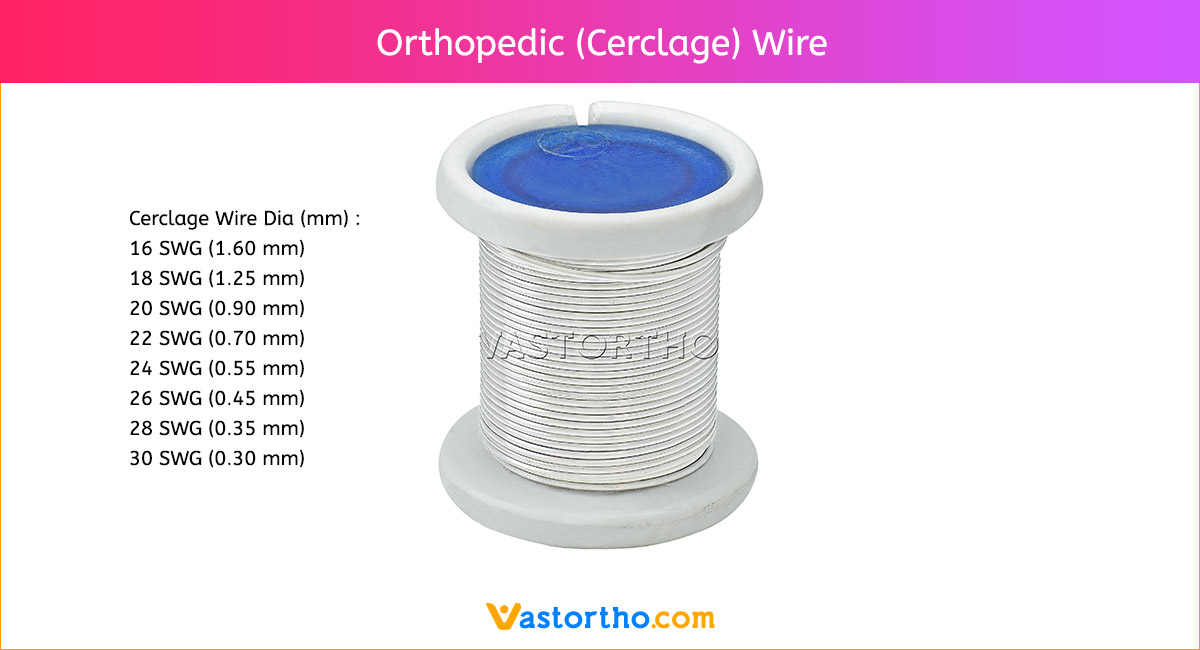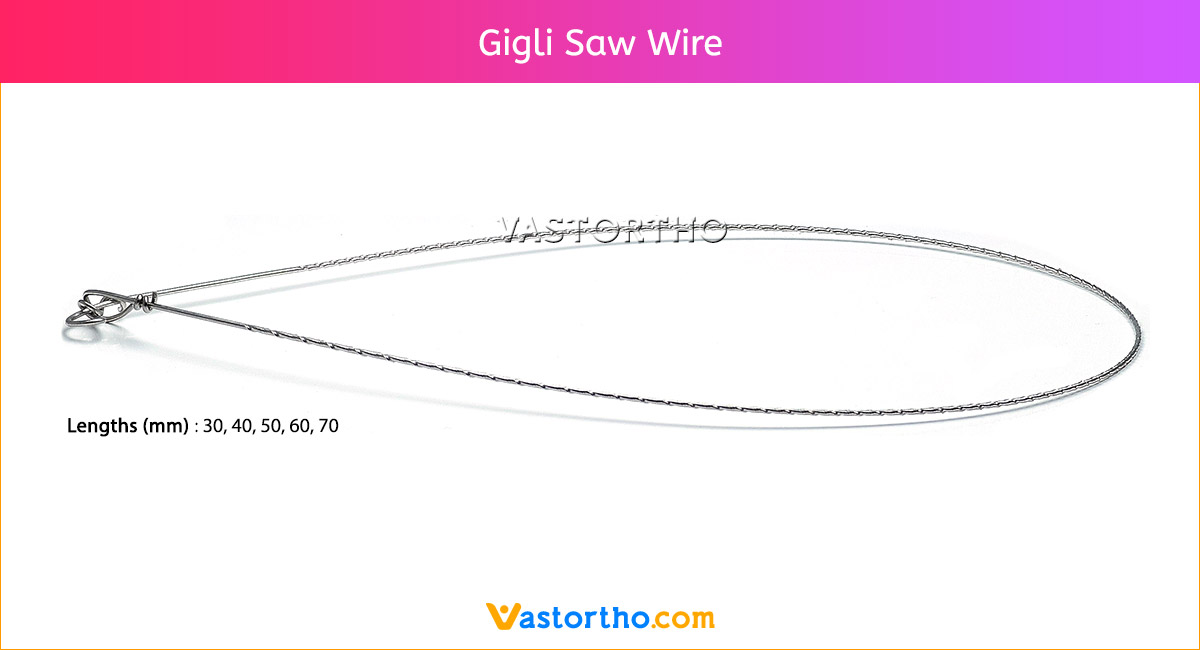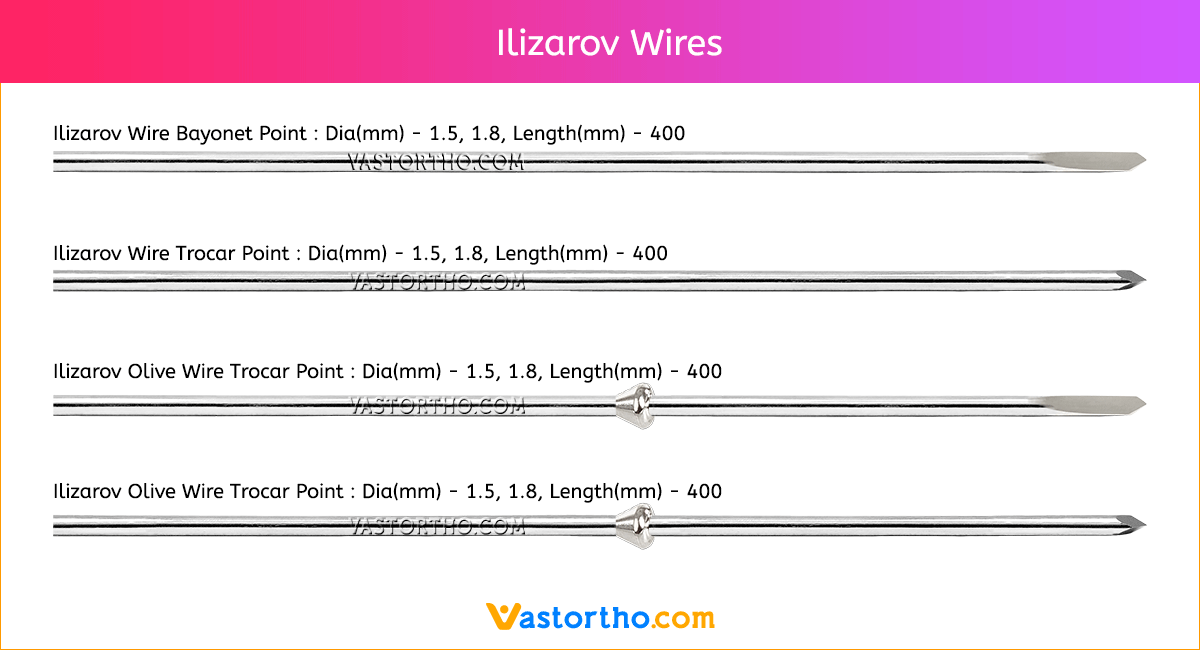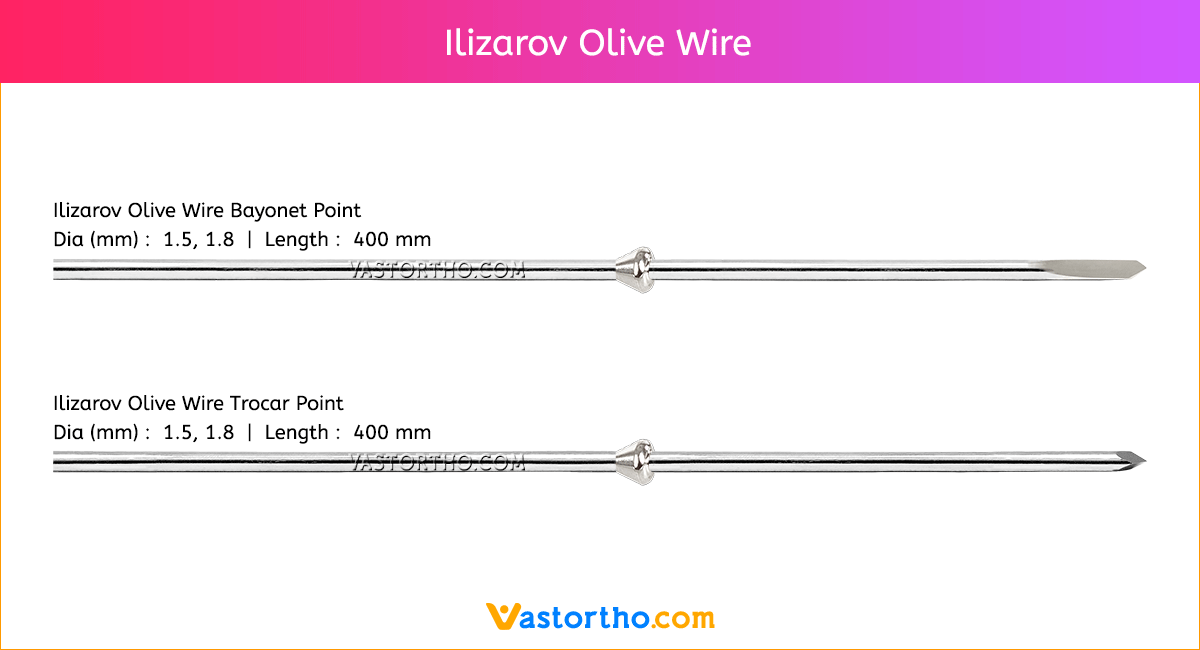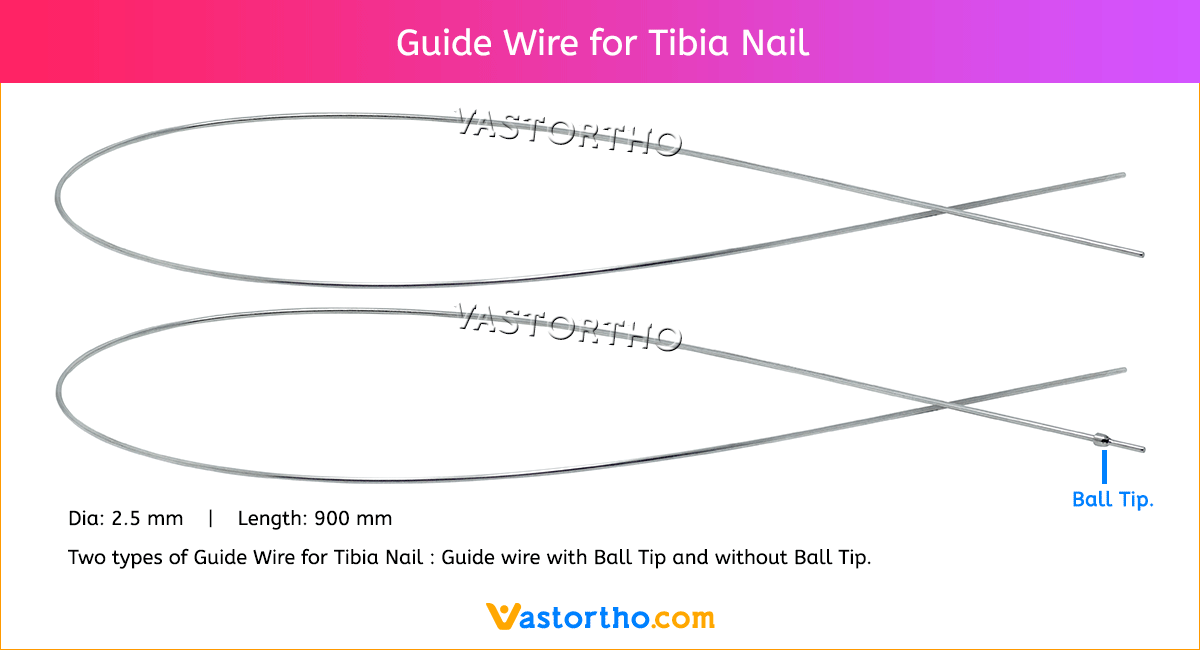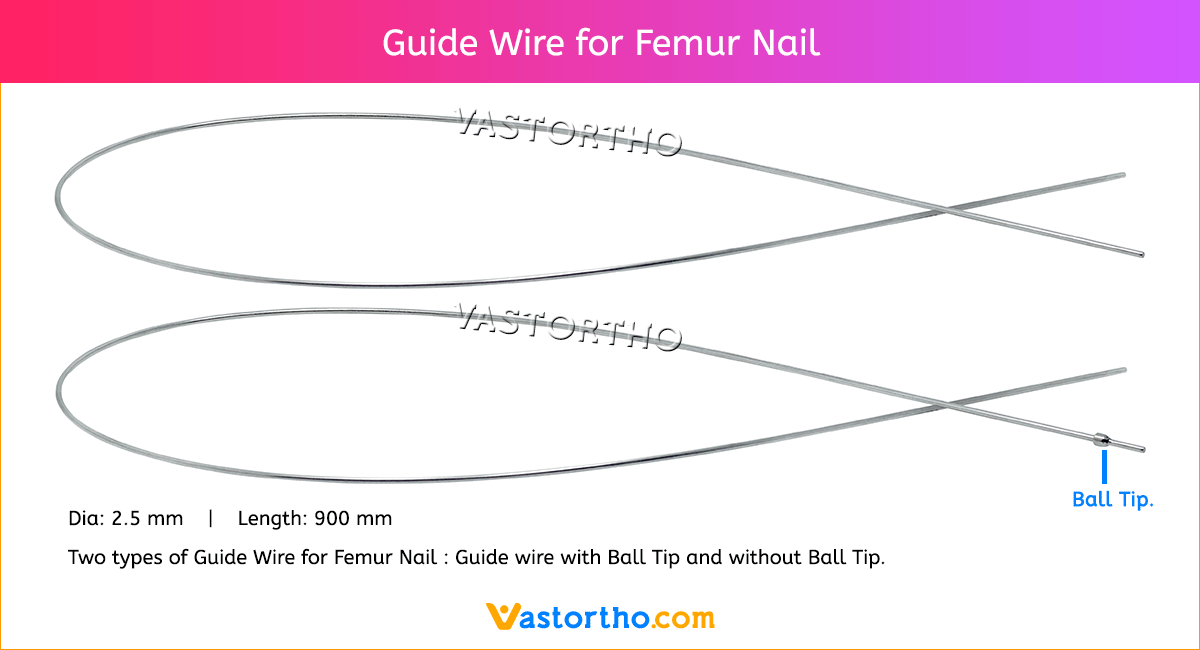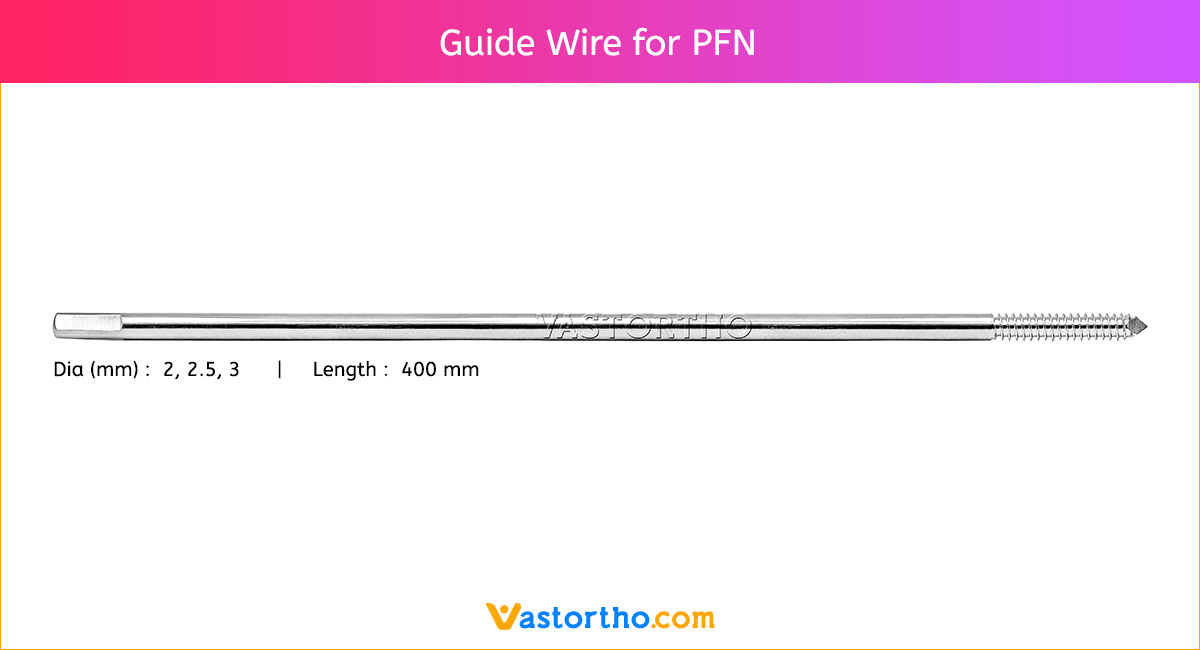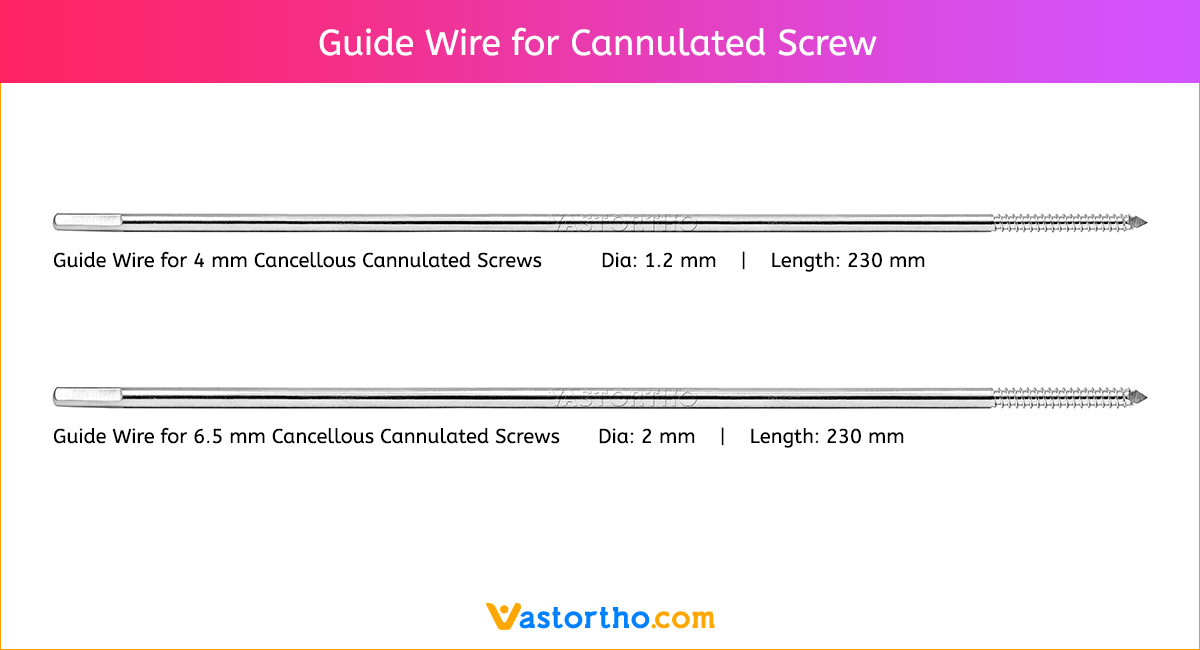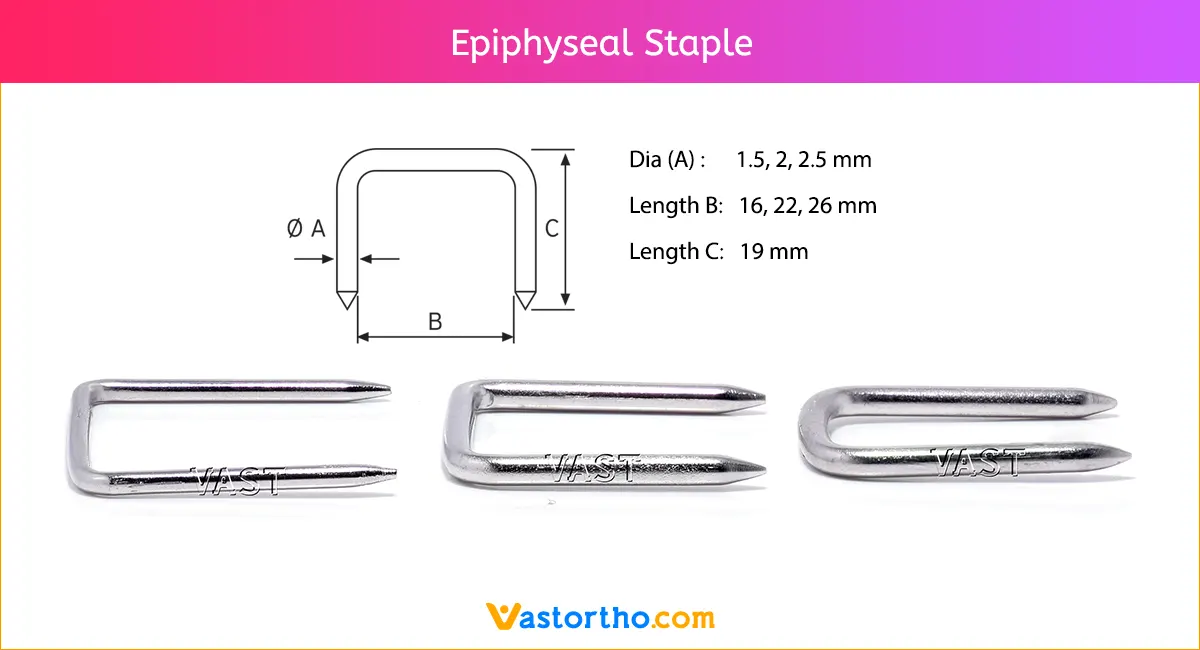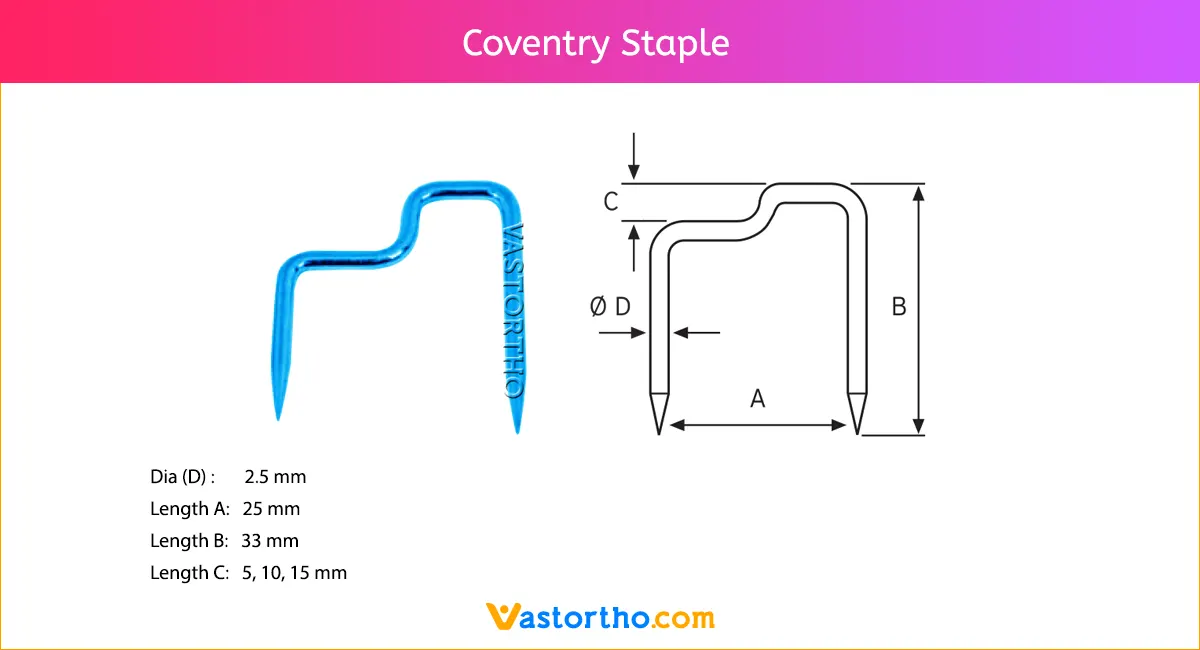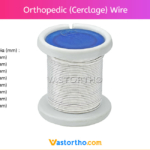Suture Wire Specification, Uses, Sizes and Surgical Techniques.
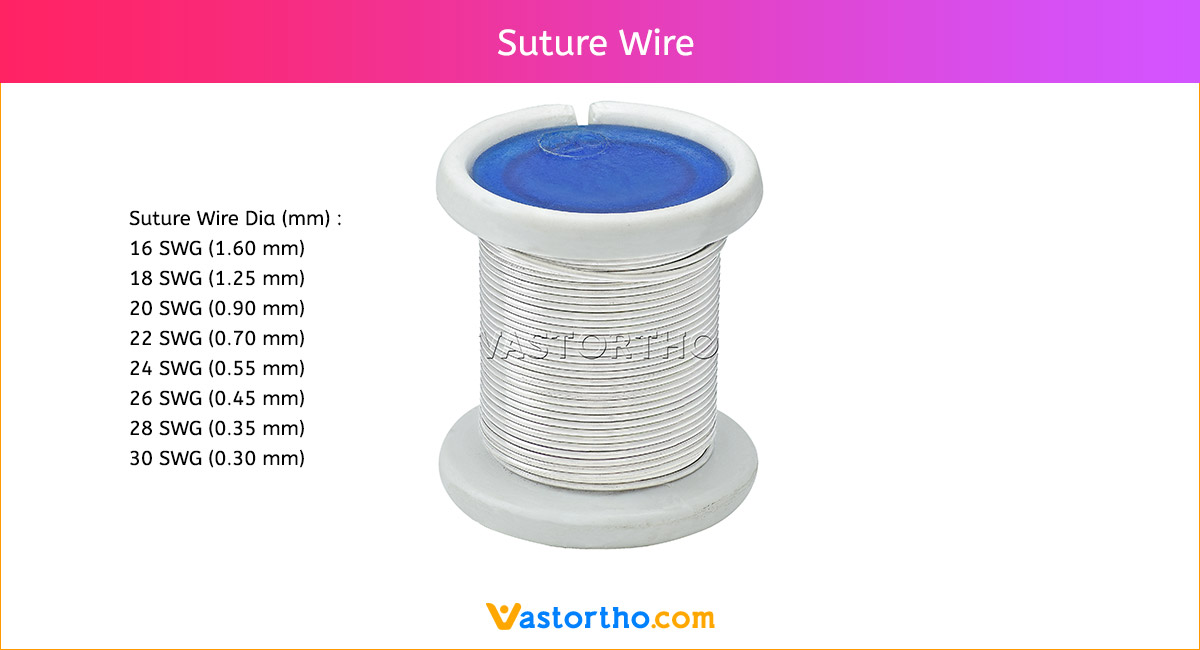
Suture Wire used to hold body tissues together after an injury or surgery. Application generally involves using a needle with an attached length of thread to stitch the wound shut.
Suture Wire comes in different diameters and lengths. Suture Wire diameters are measured in SWG (Standard wire gauge) or Millimeter. Vast Ortho Suture Wires are made from SS 316L material.
Available Suture Wire sizes are
- 16 SWG (1.60mm)
- 18 SWG (1.25mm)
- 20 SWG (0.90mm)
- 22 SWG (0.70mm)
- 24 SWG (0.55mm)
- 26 SWG (0.45mm)
- 28 SWG (0.35mm)
- 30 SWG (0.30mm)
Suture Wire Uses
Suture Wire helps to achieve stable reduction of femoral fractures which can then be supplemented with a nail or a plate. The minimally invasive technique and instrumentation offer the advantage of minimal soft tissue dissection, and the procedure is associated with excellent outcomes without any major complications.
- stabilization and fixation of proximal femur in cases of periprosthetic fractures of the femur, subtrochanteric fractures or as a prophylactic banding in total joint hip arthroplasty.
- fractures of the patella
- acetabular fractures
- acromioclavicular joint dislocation
Suture Wire has been used in the past for osteosynthesis of femoral fractures. However, the technique went into disrepute as extensive soft tissue dissection, and periosteal stripping increased the risk of bone necrosis and delayed union. Advent of new instrumentation and minimally invasive technique has significantly reduced these complications. In spite of the limited indications for its application, reduction and stabilization with cerclage wiring can supplement osteosynthesis especially in spiral or oblique fracture morphology or those with a butterfly fragment instead of interfragmentary screw fixation.

